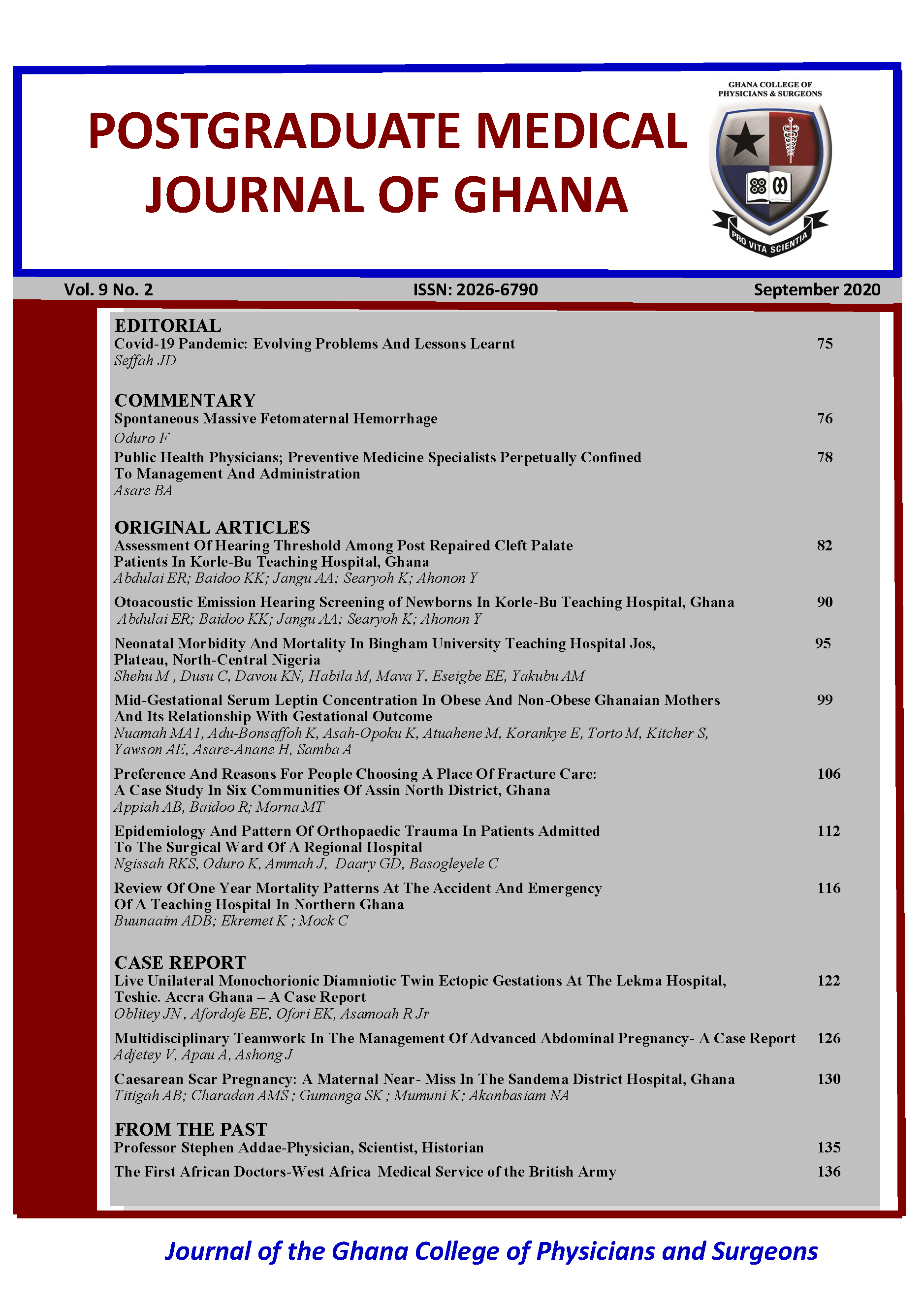Otoacoustic Emission Hearing Screening of Newborns In Korle-Bu Teaching Hospital, Ghana
DOI:
https://doi.org/10.60014/pmjg.v9i2.232Keywords:
Neonatal Intensive Care Unit, External Auditory canal, Otoacoustic Emissions, Caesarean Section, Ear, Nose, ThroatAbstract
Objectives: The aim of the study was to determine outcomes of new-born hearing screening and identify possible causes of hearing loss in NICU Admissions.
Method: The research is a cross sectional study of new born screening conducted on all consenting consecutive new- born who are healthy and seen at the post-delivery ward, and NICU outpatient department of KBTH. Associations or differences in variables were examined using chi-squared test. P-value ≤0.05 was considered statistically significant.
Results: A total of 483 babies were screened during the period. The incidence of hearing loss in the new-born was 7.2%. More than half of the new-born were 4 weeks or less weeks (n=254, 52.6%) and the rest were greater than 4 weeks (n=229, 47.4%). The mean age (±SD) of the new-born are 3.94 (±2.09) and 3.80 (±2.16) weeks in the admitted and not admitted group respectively. It was revealed that 27% of the babies were admitted at Neonatal Intensive Care Unit (NICU) because of prematurity and Macrosomia (from diabetic mothers) respectively. Among the babies that were admitted, 7 failed the OAE and 101 passed. In the not admitted group, 28 failed OAE test and the rest passed (n=347). This study revealed that, there was no statistically significant association of hearing loss between babies admitted to NICU and Non-NICU babies (p= 0.728).
Conclusions: The incidence of hearing loss among the new-born was 7.2% and the main reason for NICU admission are prematurity, big baby, Birth asphyxia, neonatal jaundice, neonatal sepsis, small baby and vacuum delivery. There is no statistically significant
association between these different group babies with hearing loss.
Downloads
Published
How to Cite
Issue
Section
License

This work is licensed under a Creative Commons Attribution-NonCommercial 4.0 International License.





